Related Research Articles

Seabirds are birds that are adapted to life within the marine environment. While seabirds vary greatly in lifestyle, behaviour and physiology, they often exhibit striking convergent evolution, as the same environmental problems and feeding niches have resulted in similar adaptations. The first seabirds evolved in the Cretaceous period, and modern seabird families emerged in the Paleogene.

The Royal Australasian Ornithologists Union (RAOU), now part of BirdLife Australia, was Australia's largest non-government, non-profit, bird conservation organisation. It was founded in 1901 to promote the study and conservation of the native bird species of Australia and adjacent regions, making it Australia's oldest national birding association. In 1996, the organisation adopted the trading name of Birds Australia for most public purposes, while retaining its original name for legal purposes and as the publisher of its journal, the Emu. In 2012, the RAOU merged with Bird Observation & Conservation Australia to form BirdLife Australia.
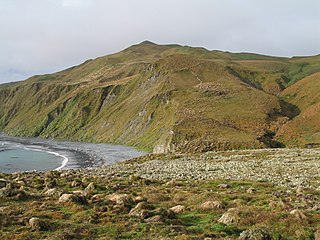
The Antipodes Subantarctic Islands tundra ecoregion, within the tundra biome, includes five remote island groups in the Pacific Ocean south of New Zealand: the Bounty Islands, Auckland Islands, Antipodes Islands and Campbell Island groups of New Zealand, and Macquarie Island of Australia.
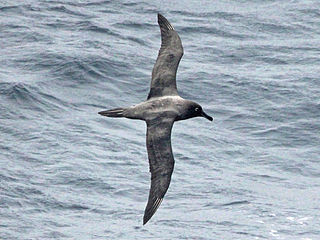
The sooty albatross is a species of marine bird belonging to the albatross family Diomedeidae. It is a medium-sized albatross that sports a sooty-brown or sooty-black color. It can be found in the southern Atlantic Ocean, the southern Indian Ocean, and the Southern Ocean. This bird scavenges for squid, fish, and carrion. Like other albatrosses, these birds mate for life and return to the same breeding spots every season. A single pair will mate every other year on a variety of islands in the southern Atlantic Ocean and the southern Indian Ocean islands. This bird is an endangered species and conservation efforts are taking place.
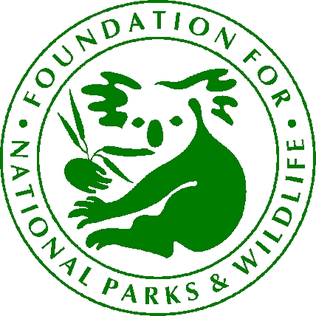
The Foundation for National Parks & Wildlife is an Australian not-for-profit, non-governmental organisation that was incorporated on 29 June 1970. Its purpose is to foster the protection of Australia's native plants, animals and cultural heritage through fundraising for environmental education and conservation projects. Since 1970 the organisation has raised more A$ 45 million for environmental conservation. The foundation was founded as a New South Wales–focused organisation, however in 2000 the foundation's members voted to amend its constitution so that the organisation could expand the scope of its work Australia-wide.

Barunguba / Montague Island is a continental island contained within the Montague Island Nature Reserve, a protected nature reserve that is located offshore from the South Coast region of New South Wales, in eastern Australia. The nearest town located onshore from the 81-hectare (200-acre) reserve and island is Narooma, situated approximately 9 kilometres (5.6 mi) to the northwest.

The flesh-footed shearwater is a medium-sized shearwater. Its plumage is black. It has pale pinkish feet, and a pale bill with a distinct black tip. Together with the equally light-billed pink-footed shearwater, it forms the Hemipuffinus group, a superspecies which may or may not have an Atlantic relative in the great shearwater. These large shearwaters are among those that have been separated into the genus Ardenna. Recent genetic analysis indicates evidence of strong divergence between Pacific colonies relative to those in South and Western Australia, thought to be explained by philopatry and differences in foraging strategies during the breeding season.

Albatrosses, of the biological family Diomedeidae, are large seabirds related to the procellariids, storm petrels, and diving petrels in the order Procellariiformes. They range widely in the Southern Ocean and the North Pacific. They are absent from the North Atlantic, although fossil remains show they once occurred there and occasional vagrants are found. Albatrosses are among the largest of flying birds, and species of the genus Diomedea have the longest wingspans of any extant birds, reaching up to 3.7 m (12 ft). The albatrosses are usually regarded as falling into four genera, but disagreement exists over the number of species.
SEA LIFE Sydney Aquarium is a public aquarium that features a large variety of Australian aquatic life, displaying more than 700 species comprising more than 13,000 individual fish and other sea and water creatures from most of Australia's water habitats. Opened in 1988, it is regarded as one of Sydney's premier tourist attractions with over 55% of its visitors each year coming from overseas.
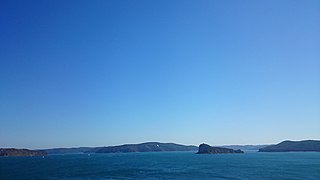
Lion Island is an island that is located at the mouth to the Hawkesbury River in Broken Bay on the Central Coast of the state of New South Wales, Australia. The island is located just off Pearl Beach and is part of the Central Coast Council local government area. It is a descriptive name because it resembles a Sphinx, a mythical figure of a crouching lion.
Mitchell Durno Murray was an Australian veterinary scientist, and an ornithologist with a particular interest in seabirds. He was born and educated in England before moving to New Zealand and then Australia. He was the first regional organiser for New South Wales of the Australian Bird Banding Scheme. He was instrumental in establishing the New South Wales Albatross Study Group, now the Southern Oceans Seabird Study Association (SOSSA). He was President of the Australian Bird Study Association 1973–1974, Editor of its journal Corella 1990–1994, and largely responsible for its 'Seabird Islands' series.
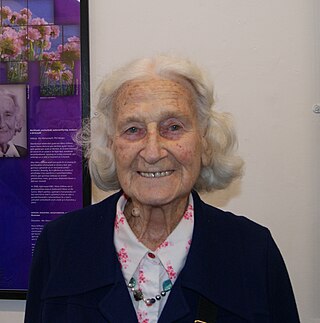
Mary Eleanor Gillham MBE was a British naturalist, university lecturer, and writer, who was resident for many years in Gwaelod y Garth and then Radyr, in Cardiff, Wales until her death.

The white-bellied storm petrel is a species of seabird in the family Oceanitidae. It is found in Angola, Argentina, Australia, Brazil, Chile, Ecuador, French Polynesia, French Southern Territories, Maldives, Namibia, New Zealand, Perú, Saint Helena, and South Africa. Its natural habitat is open seas.
The Five Islands Nature Reserve is a protected nature reserve located in the Tasman Sea, off the Illawarra east coast of the state of New South Wales, Australia. The 26-hectare (64-acre) reserve comprises five continental islands that are situated between 0.5 and 3.5 kilometres east of Port Kembla. The Five Islands are Flinders Islet, Bass Islet, Martin Islet, Big Island and Rocky Islet.
Lindsay E. Smith OAM is an Australian naturalist, ornithologist and conservationist notable for his work towards the study and conservation of seabirds, especially albatrosses, along the Illawarra coast of New South Wales.
Michael John Imber was a New Zealand ornithologist known for his research work and expertise on petrels.

Featherdale Wildlife Park is a zoo located in Doonside, Sydney, Australia. The park is located in Sydney's west, approximately 40 km (25 mi) from Sydney's CBD. The park contains various species native to Australia, and is known to be one of the world's largest collections of Australian fauna. The facility provides displays, events and interactive experiences. The site covers 3.29 hectares, ranging from animal enclosures and display areas to visitor facilities, including picnic spaces, shops and basic amenities. It specialises in Australian native wildlife and birds, as well as reptiles and marsupials. The premises is accredited by the Zoo Aquarium Association Australia.

The New South Wales Albatross Study Group (NSWASG) was an amateur ornithological fieldwork group that banded albatrosses and other seabirds off the coast of eastern New South Wales, Australia. Primarily targeting winter feeding aggregations of wandering albatrosses near Sydney, it developed its own catching methods and initiated what has become the longest-running continuous albatross research study in the world.

Solitary Islands Marine Park (SIMP) is a marine park in New South Wales State waters, Australia. It adjoins the Solitary Islands Marine Reserve and was declared under the Marine Parks Act 1997 (NSW) in January 1998. Prior to this it was declared a marine reserve in 1991. The Park was one of the first declared in NSW and stretches along the northern NSW coast, from Muttonbird Island, Coffs Harbour, to Plover Island near Sandon River, 75 kilometres to the north. It includes coastal estuaries and lakes and extends from the mean high water mark, to three nautical miles out to sea, covering an area of around 72 000 hectares. There are five main islands in the Park, North Solitary Island, North West Solitary Island, South West Solitary Island, South Solitary Island and Split Solitary Island, as well as other significant outcrops such as Muttonbird Island and submerged reefs.
References
- ↑ "Serventy Conservation Medal for 2006" (PDF). Wildlife Protection Society of Australia. Retrieved 19 June 2011.
- ↑ About SOSSA
- ↑ "Albatross fishermen". Roland & Julia Seitre. Retrieved 19 June 2011.
- ↑ "Australian Web Archive". Archived from the original on 24 September 2010.
- ↑ Endangered Population of Little Penguins (Eudyptula minor) at Manly: Recovery Plan (PDF). Sydney: NSW National Parks and Wildlife Service. 2000. ISBN 0-7313-6260-8.
- ↑ SOSSA: Pelagic trips
- ↑ SOSSA projects